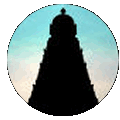 |
 |
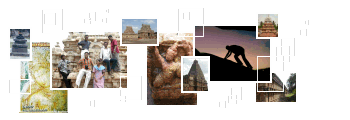 |
http://www.varalaaru.com A Monthly Web Magazine for South Asian History [187 Issues] [1839 Articles] |
 |
 |
 |
http://www.varalaaru.com A Monthly Web Magazine for South Asian History [187 Issues] [1839 Articles] |
|
Issue No. 172
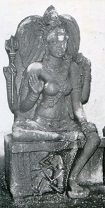
இதழ் 172 [ அக்டோபர் 2023 ] 
இந்த இதழில்.. In this Issue.. 
|
Author: www.glorioustamils.com; www.attraithingal.com Thimilai and Idakkai The basic features of thimilai and idakkai and their similarities with thudi, damarugam and udukkai were already discussed. To point out again, one specific difference between thimilai and idakkai- thimilai is beaten with both hands on one side; idakkai is beaten with one hand or sometimes with 'kunil'/ a curved stick; the other hand is kept below the central rope. The tamil word 'Idakkai', simply translates as left hand. Although thudi and udukkai also have the movement of the left hand, there is a difference when compared with idakkai. This left hand that is kept inside the central rope remains the key factor in differentiating and identifying idakkai in sculptures, from other percussion gadgets. What could be the action of the left hand that gives idakkai its name? Idakkai in sculptures doesn't have a tassel to pull; but has a central rope below which the left hand operates. Dr. R. Kalaikkovan suggests a logical and convincing motion of the left hand in idakkai that could bring out differentiating rhythms of the instrument. He says, the fingers of the left hand could be pulling the ropes up and down to loosen and tighten them respectively. This action of the ropes connected to the holes in the side faces, makes the skin to expand and contract, in turn creating changes in rhythm. This could be the reason behind the left hand kept well below the central rope, the distinct portrayal of idakkai in sculptures. Chekkizhar mentions thimilai along with pambai, kandai and thudi as instruments producing powerful sounds, in Eripatha Naayanaar Puranam (12.014.31). Apart from Periya Puranam, thimilai is listed with several other instruments in Kambaramayanam, Thirupugazh and Kanthapuranam. In comparison, idakkai is shown by Thirugnanasambandhar as one among 5 other instruments (kathirikai, thuthiri, thudi, thakkai and padagam) to the tunes of which, Lord Shiva dances (3.76.5). Idakkai is also mentioned in Thiruppugazh. Both the instruments are discussed in detail in Pancha Marabu. It identifies both thimilai and idakkai among the 30 skin head percussion instruments of ancient Tamilnadu. Additionally, thimilai is classified under instruments with vigorous sound and it is also a drum used to showcase courage and fortitude. According to Pancha Marabu, idakkai also called kudukkai, is classified under soft sounded instruments and is one of the lead percussion gadgets. This treatise is specified by Adiyaarkku Nallaar (12th century), commentator of Silappadhikaram, as one of the several texts that helped him write his commentary on Silambu. Hence, Pancha Marabu is considered to be a literary work authored before Adiyaarkku Nallaar. Adiyaarkku Nallaar briefs about thimilai and idakkai in his explanation of Arangetru Kaathai. He refers to thimilai as one of the drums associated with harmonious music (பண்ணமை முழவு). However, he explains idakkai in detail. While analysing 'தாழ்குரல் தண்ணுமை' (3:27), the 30 percussion instruments are re-emphasized and idakkai is elucidated. He says, idakkai can also be called Aavanji and Kudukkai. Aa (cow) and Vanji (young, tender) are two words that describe the making of idakkai- the face of the instrument is covered with the tender skin of cow. The wood used to make idakkai is carved inwards in a conical shape (குடுக்கையாக அடைத்தலால் குடுக்கை என்று பெயராயிற்று), and hence it is also known as Kudukkai. Kallaadam– a literary work post 10th century CE, shows the presence of idakkai. An interesting illustration can be observed in Kallaadam on idakkai. Before proceeding to the verses of Kallaadam, let us take a glimpse of the 'Nrittamurtis – Dancing Shiva' in T.A. Gopinatha Rao's book 'Elements of Hindu Iconography'. Apart from the nine Nrittamurtis described by the Saivagamas, the author expounds various other Natanamurtis in the Dancing Shiva sculptures of Ellora, Badami and across Tamilnadu. He talks of the Dancing Shiva in Taramangalam where- • His right leg is raised to the crown • one of his left hands holds the thudi and the right strikes it with a kunil (author mentions this as damaru) • to the right of Shiva stands Brahma sounding the cymbals • to the left of Shiva is Vishnu striking the drum This sculpture is similar to that of Dancing Shiva in Sucheendhram temple, Kanniyakumari and Perur Patteeswarar temple, Coimbatore. Furthermore, in Hindu iconography, while depicting Nataraja, Devi -the consort of Shiva should be standing to the left of the ecstatic dancer. Coming back to Kallaadam, Poem 21 of Kallaadam talks about the blissful dance of Shiva. While Shiva dances in perfect coherence with the grammar of Dance (21:verses 27-30)- • Parvathy, the daughter of the King of Himalayas watches • Brahma provides the rhythmic beats • Thirumal (Vishnu) plays the idakkai • Vaanan, King of one of the three forts (muppuram) plays the kudamuzhavu And the list goes on. This literary description of Vishnu providing drums – specifying it as idakkai in Kallaadam, could shed light on the importance of idakkai for dances and its widespread status among percussion instruments during the Cholas that is expressed explicitly in the temple sculptures. Additionally, the commentary of Panchamarabu provides the dimensions and measurements of idakkai (R.Alavanthaar, Thamizhar Thol Karuvigal, pg.41). Regarding the significance and prominence of the instrument during the Cholas and thereafter, Dr. R. Kalaikkovan, in a telephonic conversation with the author of this article, specified a subtle peculiarity. The fact that a prominent percussion instrument gets space in the hands of Thirumal/Vishnu instead of the Cosmic Dancer, shows its position next to those gadgets held by the Supreme Dancer Himself. We already saw Damarugam as an inseparable rythm provider in the hands of Dancing Shiva and Udukkai held by Him in his different personifications. Yet another notable fact about idakkai is its rarity in Chola inscriptions. On the other hand, thimilai is cited in several temple inscriptions including Thirumeeyachur, Thiruvidaimaruthur Mahalingaswamy, Thirukarukaavur Madhuvaneswarar, Thiruvaiyaaru Aiyaarappar, Melsevur Rishabapureeswarar, Thirunallam Umamaheswarar temples and several others (Dr. R. Kalaikkovan, Cholarkaala Aadarkalai, pg.141). These inscriptions talk about thimilai artists employed to perform during daily rituals of the temples. The lone inscription referring to Idakkai belongs to Tirunelveli Nellaiyappar temple, during the 26th regnal year of Sadayavarman Kulasekara Pandian I (1190-1216). The inscription notifies the land and grains provided to one, Devan Anavaradhanaana Idakkai Marayan who was the idakkai artist of the temple to play it in front of the Lord. That idakkai was played everyday in temples is reiterated here. But what is more significant is that the instrumentalist was awarded the distinguished title 'Maaraayan'. Nirutha Maaraayan and Nirutha Peraraiyan (titles for best dancer), udukkai vidangan, paadavyam koothan veethi vidangan (title for paadaviyam artist), chaakkai maaraayan (title for chaakkai koothu artist) are special titles awarded to exceptionally talented artists in respective art fields as recognised by the Kings. Such was the title 'Idakkai Maaraayan' awarded to the idakkai artist in Nellaiyappar temple. 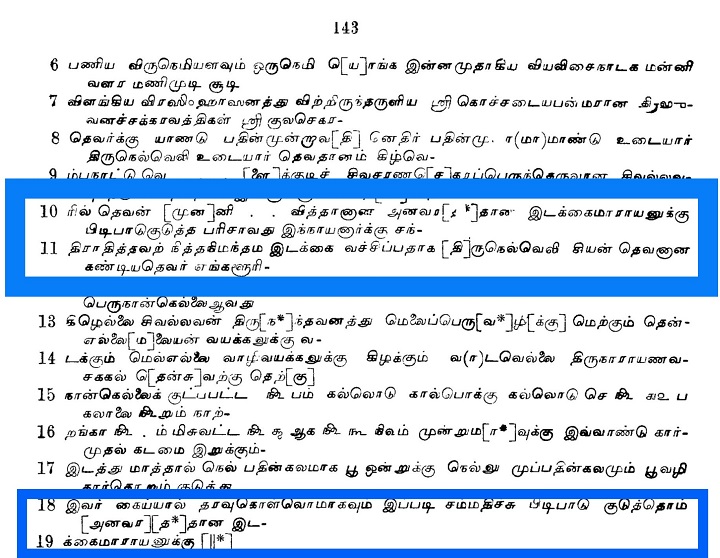 Pg.143, South Indian Inscriptions, volume 5 :415 VI. Sculptures as evidences of dance and music in Tamilnadu There has never been any silence of stones in medieval Tamilnadu, be it epigraphy or iconography. Tamilnadu boasts of the highest number of inscriptions found in India. With the inscriptions, the echo of skilled craftsmen sculpting hard stone to fascinating sculptures should have been a day to day scenario for the population that lived during the ages of Pallava, Pandya and Chola and Chera dynasties. The sound still resonates in these historic temples of Tamilnadu through splendid sculptures and intriguing inscriptions. In the case of idakkai where there seems to be a silence in inscriptions, identifying through sculptures could help in decoding its enigmatic status. Hence, one moves inquisitively towards sculptures. They could indeed be the sole yet major resources to prove the usage of idakkai during the medieval Cholas. To a researcher's delight, they do not disappoint. Below are a few sculptures where the artist's left hand is placed below the central rope tied around the narrow neck of the instrument and right hand is in strike position, the key aspect that differentiates idakkai from others. 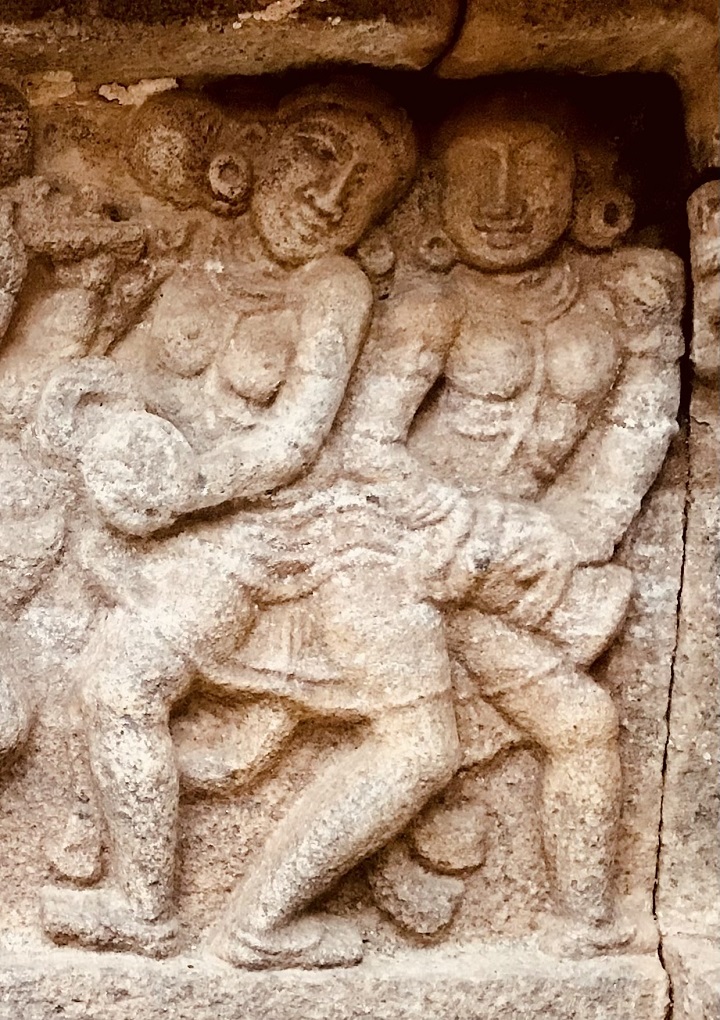 darasuram airavatheswaram 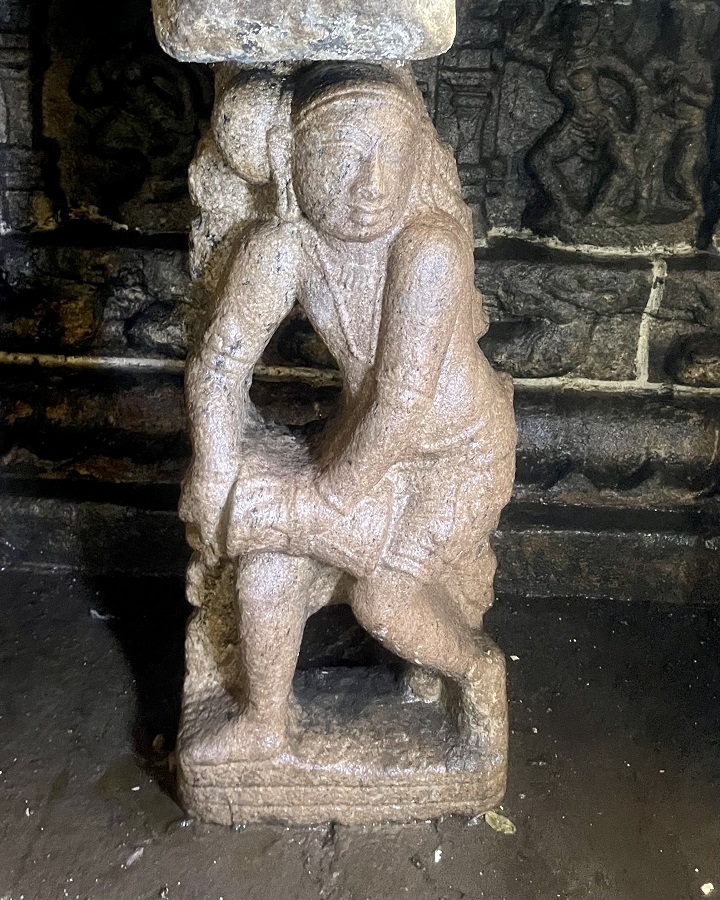 kumbakonam sarangapani above gallery- idakkai in left: darasuram airavatheswaram and right: kumbakonam sarngapani temples below gallery- miniature sculptures of kumbakonam sarngapani temple 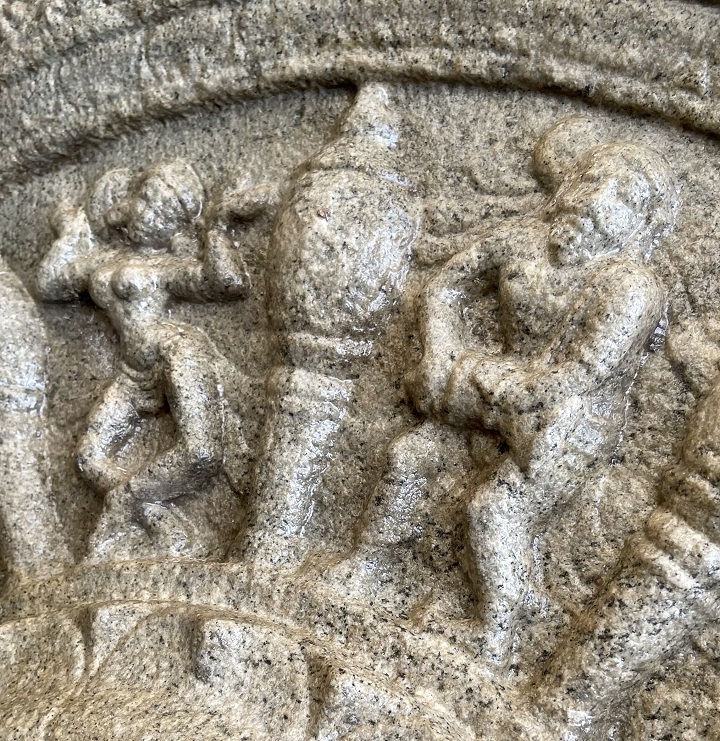 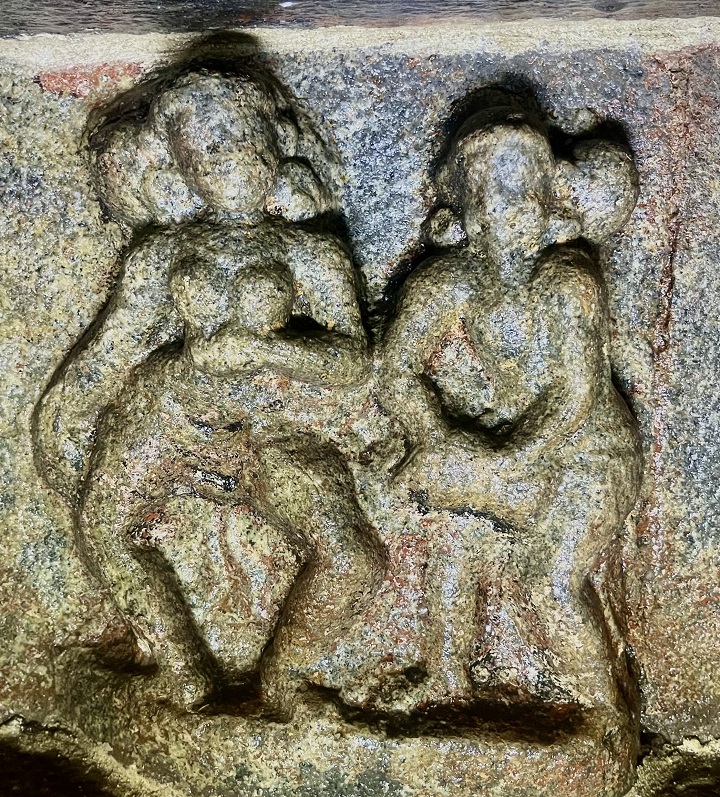 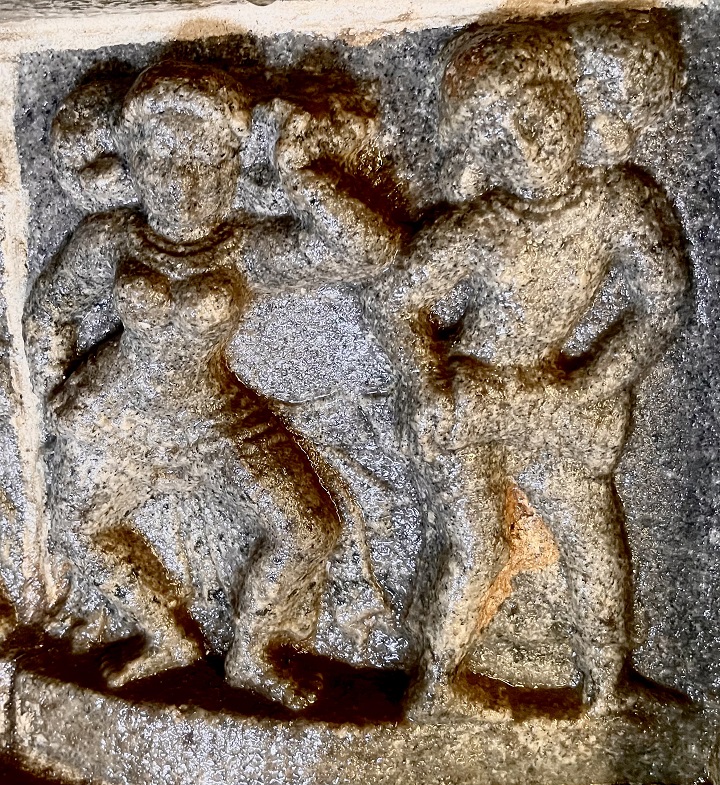 V. Identifying Idakkai- Ambiguities and Complications Inspite of the endless adjectives and extensive narratives provided in sangam, epic and bhakthi literatures, it is truly a baffling task to differentiate a few traditional instruments. However, sculptures related to dance and music in Tamil temples help in demystifying the ambiguities stretched out beyond available literary interpretations. Thudi, Damarugam and Udukkai have already been clearly identified, analysed and differentiated by Dr. R. Kalaikkovan in his article. Hence, it is quite understandable to feel, filtering sculptures that show the characteristic features of thimilai and idakkai would be extremely easy to accomplish. Certainly not as easy as it sounds. Not because such a portrayal is rare but as they are countless. For example, a few reasons that make the identification of idakkai and differentiation between idakkai and udukkai difficult- Udukkai and Idakkai in sculptures possess almost the same features. Both are portrayed with or without the shoulder rope; with or without kunil/curved stick; sometimes they don't have an hour glass shape but are sculpted as rounded; size of both gadgets are varied – small, medium and big. Hence, one has to search for the intricate difference – udukkai gets its sound by pulling the central circular rope from outside, where as in idakkai, the hand that presses the central part of the instrument is kept below the ropes. The same way, thimilai has the distinction of being beaten on one side with both hands. Few sculptures that have a distinctive long hour glass structure look much similar to today's thimilai. Today's idakkai and thimilai are held with hanging ropes from the left shoulder. But sculptures are mixed with and without shoulder rope; some gadgets are balanced between thighs. With such minute differences, there are other factors that make the identification more complicated. Clarity in sculptures plays a crucial role. Sculptures that are compromised due to natural material degeneration as well as human negligence and damage, pose enormous challenges to a researcher. Failure to respect and preserve such precious documented sources should be considered cultural carnage. Comprehension with a broader perspective Sangam age common man's multi purpose musical drum thudi, one of the oldest representative elements of ancient Tamil culture continues to be part of the literary Tamil society till today. With Bhakti age, thudi gets a transformed clone in udukkai. The glorification of Shiva as the eternal unparalleled Dancer adds additional glory to several instruments, most prominent of them being thudi, udukkai and damarugam. Damarugam grabs the exclusivity of being held by Dancing Shiva, providing the irreplaceable strike to His whirls and twirls. Reference to thimilai in several medieval Chola inscriptions; and idakkai mentioned in only one available Pandya inscription but found in several sculptures, show the popularity of the two in temple rituals and as accompaniments to dance performances across Tamilnadu. With the specific concern of understanding idakkai beyond difficulties in identification, these are a few facts that can be decoded regarding idakkai, with the available limited evidences - literary, sculptural and inscriptional. 1. Idakkai finds no mention in sangam literature and post sangam silappadhikaram; 2. Karaikkal Ammaiyar, the saiva saint who lived before Appar and Sambandhar, cites several instruments of her era in her hymns; particularly introduces nine percussion instruments (popular among the nine being mathalam, kudamuzhavu and damarugam); yet there is no reference to idakkai; 3. Apart from Sambandhar's lone hymn, there seems to be no available literary source on idakkai from the Pallavas to the Cholas of Vijayalaya lineage; 4. With Pancha Marabu's exact period not known, references in Adiyaarkku Nallaar's commentary of Silappadhikaaram and Kallaadam suggest the prevalence of idakkai during later Chola period in Tamilnadu; 5. Clear sculptures that can be identified beyond doubt as idakkai in Darasuram Airavateswarar and Kumbakonam Sarngapani, belong to the later Cholas; 6. These Chola sculptures do not indicate the idakkai players as Royal artists, but suggest them to be rural performers 7. The Chola period distinctively boasts of innumerous inscriptions and substantial among those provide details of several musical instruments; yet, idakkai doesn't find a place in any. The lone inscription of idakkai from Nellaiyappar temple, Tirunelveli belongs to the Pandyas (1190-1216); 8. Vishnu, beating the idakkai in the Dancing Shiva sculptures of Sucheendhram temple (Kanniyakumari) and Perur Patteeswarar temple (Coimbatore), both seen as adaptations of Kallaadam, belong to the Nayaka period. 9. According to an article in tamilmurasu australia, the only known places in Tamilnadu where idakkai is still played are Srirangam temple, Tiruchirappalli and Parakkai Madhusudhana Perumal temple, Kanniyakumari. Two striking facts can be observed here - i. Both are vishnu temples and ii. Parakkai is situated in Kanniyakumari, closer to Tirunelveli (place of the lone inscription on idakkai) and neighbouring district to the state of Kerala. With these facts, it is suggestive that idakkai could have gained prominence during the later Cholas, yet was more popular in the Pandya country. Later sculptures of Sucheedram and Perur show its significance during the Nayakas. In view of the lone Tirunelveli inscription on idakkai, idakkai performed in Parakkai temple, Kanniyakumari and the geographic proximity of both places to today's Kerala where idakkai in temples and stage performances is still hugely popular, shows its comparative dominance in Pandya-Chera territories. The few sculptures that portray idakkai in later chola sculptures showcase it as a rural dancer's accompaniment rather than a classical enhancer, is not to be ignored. Idakkai could've been predominantly a rural instrument, which later gained prominence in temple rituals. Further extensive research that includes the study of vast core of sculptures available across temples of Tamilnadu might shed better light on Idakkai. Thus, the sculptural representation of udukkai, thimilai and idakkai mirror the splendid celebration of music and dance in medieval Tamilnadu. Yet, what is striking is the dual role of udukkai, held by the unparalleled Dancer and by artists/ganas playing for His exceptional Dance. One must not miss the additional usage of udukkai along with the thevaram hymns and in the much adored dance field too. These facts make it the most distinguished gadget among the five in analysis – Thudi, Udukkai, Damarugam, Thimilai and Idakkai. Reference books/links- 1. டாக்டர் இரா. கலைக்கோவன், சோழர் கால ஆடற்கலை 2. டாக்டர் இரா. கலைக்கோவன், துடி, தமருகம், உடுக்கை– http://www.வரலாறு.காம்/ http://www.varalaaru.com 3. 31, eripatha nayanar puranam, periya puranam, 12.014.31 4. Thirugnanasambandhar, Thiruvedhavanam/ Thirumaraikkaadu (3.76.5) 5. பஞ்சமரபு 6. Ilangovadigal, Silappadhikaaram, Arangetru Kaathai, verses 139-143- 'இளங்கோவடிகள் அருளிச் செய்த சிலப்பதிகார மூலமும் அரும்பதவுரையும் அடியார்க்கு நல்லாருரையும்', உ.வே.சா. பதிப்பு 7. கல்லாடம், tamilvu.org, செய்யுள் 21, pg. 182 8. கல்லாடம், மயிலேறும் பெருமாள் பிள்ளை முதலிய வித்வான்௧ள் எழுதிய உரை, tamildigitallibrary.in, pgs. 164-171 9. T.A. Gopinatha Rao, Elements of Hindu Iconography- volume II Part I 10. R.Alavanthaar, தமிழர் தோற்கருவிகள்/ Thamizhar Thorkaruvigal, pg.41 11. மு. நளினி, அர. அகிலா, தேடலில் தெறித்தவை-11, இடக்கை மாராயன்– http://www.வரலாறு.காம்/ www.varalaaru.com 12. Pg.143, South Indian Inscriptions, volume 5 :415 13. சரவண பிரபு ராமமூர்த்தி, அழிந்து வரும் தமிழர் இசைக்கருவிகள் – பகுதி 21 – இடக்கை, tamilmurasuaustralia.com |

சிறப்பிதழ்கள் Special Issues 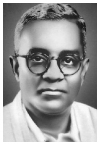

புகைப்படத் தொகுப்பு Photo Gallery 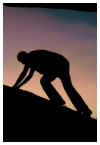
|
| (C) 2004, varalaaru.com. All articles are copyrighted to respective authors. Unauthorized reproduction of any article, image or audio/video contents published here, without the prior approval of the authors or varalaaru.com are strictly prohibited. | ||